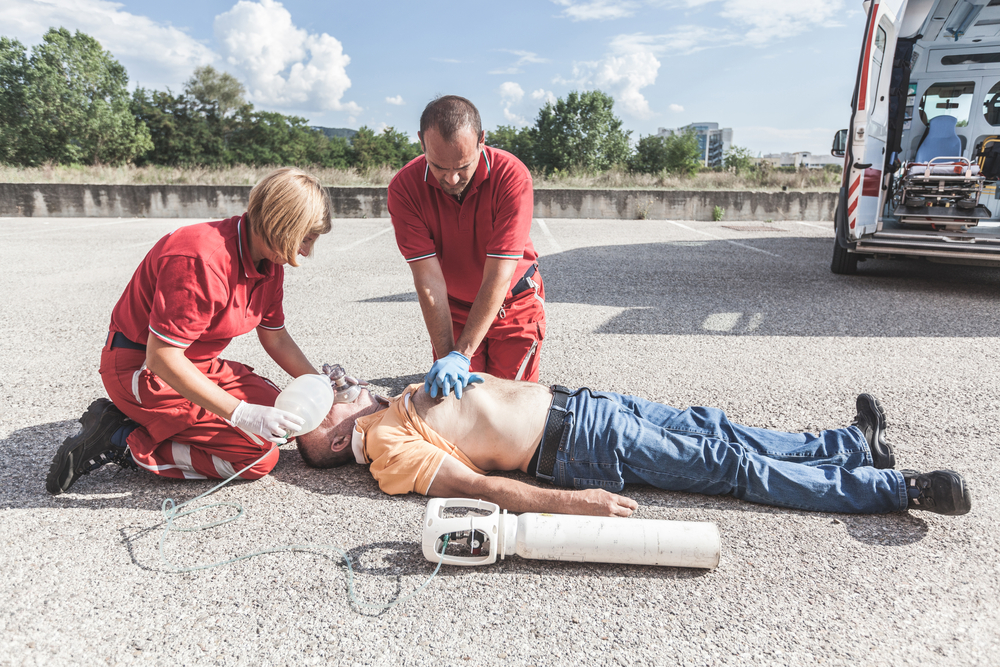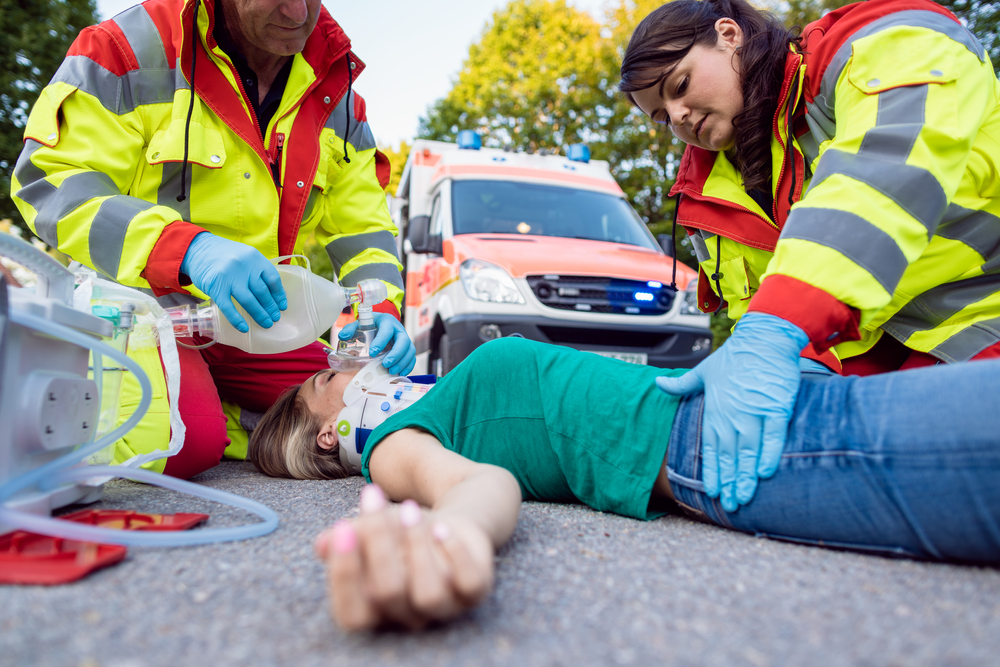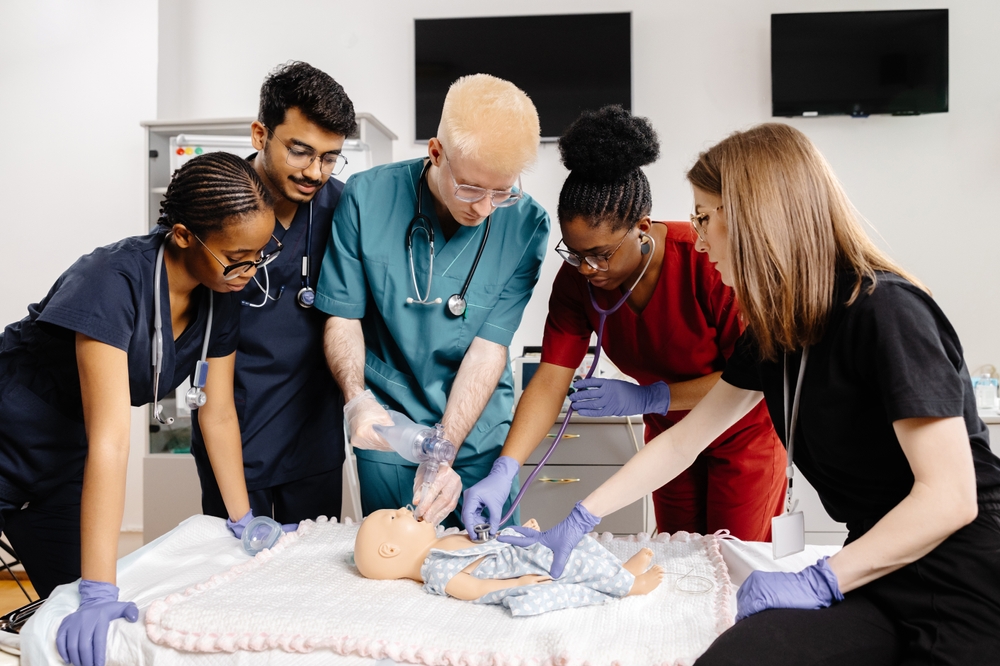Every minute counts during a cardiac arrest. The BLS Adult Cardiac Arrest Algorithm serves as your structured roadmap to deliver life-saving care when seconds matter most. This evidence-based protocol, developed by the American Heart Association (AHA), guides healthcare providers and trained rescuers through critical decision-making steps during adult cardiac emergencies.
The algorithm's power lies in its systematic approach:
Your decision to master this algorithm through BLS certification transforms you into a vital link in the emergency response chain. Studies show that immediate CPR can double or triple a cardiac arrest victim's chance of survival.
When you earn your Basic Life Support certification, you gain:
Don't wait for an emergency to wish you were prepared. Your BLS certification equips you with the skills to act decisively when someone's life hangs in the balance.
To further enhance your skills, consider pursuing BLS recertification which includes comprehensive study materials organized into manageable sections for effective learning. Moreover, mastering the Post Cardiac Arrest Algorithm can equip you with additional life-saving skills and expert guidance for critical situations.

The BLS Adult Cardiac Arrest Algorithm follows a systematic approach that starts with scene safety and progresses through critical assessments. Let's break down each essential step you need to master:
Your accuracy during these assessments directly impacts survival rates. A proper BLS course teaches you to perform these steps efficiently while maintaining composure under pressure. Through hands-on BLS training, you learn to:
These initial steps create the foundation for all subsequent interventions. Your thorough assessment guides the appropriate response pathway, whether it's initiating CPR, using an AED, or providing rescue breaths. Mastering these fundamental skills through dedicated practice ensures you're prepared to handle cardiac emergencies effectively.
However, it's essential to note that different scenarios may require different approaches. For instance, if a child is involved, the Pediatric Basic Life Support Algorithm would be applicable, especially when two rescuers are present.
Moreover, ensuring [child safety at home](https://affordableacls.com/pals-child-safety-at-home-recognizing-common-household-hazards-and-emergency-response-for-accidents) is crucial as many emergencies can arise from household hazards. Enrolling in a PALS course could significantly enhance your skills in handling such situations.
Whether it's mastering adult BLS techniques or understanding pediatric protocols, continuous learning and practice are key to being prepared for any emergency situation.
Your initial assessment reveals critical information that determines your next steps. Here's how to respond to different scenarios you might encounter:
Remember to switch providers every 2 minutes if possible to maintain high-quality compressions. Fatigue can significantly impact the effectiveness of your chest compressions.
For more detailed guidance and resources such as ACLS algorithms, or if you're interested in recertification courses, feel free to explore these options. Additionally, you may find it useful to take some quizzes related to your training or review certain lessons such as this lesson on stroke management or this lesson review for further learning opportunities.

An AED serves as a critical lifeline during cardiac arrest emergencies. This portable device analyzes heart rhythms and delivers electric shocks to restore normal cardiac function when necessary. The American Heart Association recognizes AEDs as essential tools that can double or triple survival rates when used promptly.
The science behind AED effectiveness lies in its ability to identify and treat two specific heart rhythms:
These conditions prevent proper blood circulation, leading to cardiac arrest. The AED's electrical shock disrupts these abnormal rhythms, giving the heart a chance to reset and resume its normal beating pattern.
The AED's built-in voice prompts guide you through each step, making it accessible for both trained professionals and lay rescuers. The device automatically determines whether a shock is needed based on its analysis of the heart rhythm.
Additionally, it's important to recognize symptoms that may indicate a heart attack, characterized by chest tightness, nausea, sweating, shortness of breath, fatigue, pain in the arm or jaw among others. In such cases, calling 911 and having the patient chew one full strength aspirin while being prepared to start CPR if necessary can be life-saving measures.
For those regularly working with kids, obtaining a PALS certification can equip you with vital skills needed to manage not just cardiac arrests but also other emergencies like allergic reactions or medication side effects.
In any emergency situation requiring CPR or advanced life support, having well-prepared knowledge is key. This includes knowing best study tips for online course takers which can greatly enhance your learning experience in acquiring necessary certifications such as ACLS or PALS.
Recognizing signs of opioid overdose during cardiac arrest requires specific interventions. Watch for:
When you suspect an opioid overdose, administering naloxone becomes a critical life-saving step. Here's how to integrate naloxone into your response:
For further guidance on advanced cardiac life support procedures, refer to these ACLS algorithms.
Protecting yourself and others during resuscitation efforts requires enhanced safety measures:
N95 mask or equivalent
Eye protection
Disposable gloves
Protective gown or covering
Limit the number of responders in the immediate area
Place a cloth/mask over the victim's nose and mouth
Consider using mechanical CPR devices when available
Maintain proper ventilation in enclosed spaces
Your response strategy needs adjustment based on available resources and situation specifics:
It's generally not recommended to move a victim unless there is a direct danger to their life, or if it's necessary to provide care. In such cases, consider the following moving victims guidelines:
Track these critical elements during the response:
Remember to regularly check your naloxone supplies and PPE inventory. Keep your response kit updated with appropriate protective equipment and maintain familiarity with your organization's current COVID-19 protocols.

The decision to continue or terminate CPR requires careful consideration of specific criteria and circumstances. Here's what you need to know about these critical protocols:
It's crucial to keep track of certain key details during the resuscitation process. This includes the time CPR was initiated, the total duration of resuscitation efforts, the number of AED shocks delivered, the time when termination occurred, and the reason for termination. For a more detailed understanding of these documentation requirements, refer to this comprehensive guide.
Remember: The quality of CPR diminishes significantly after extended periods. If you're alone and becoming fatigued, focus on chest compressions until help arrives.
Research shows that proper implementation of the BLS Adult Cardiac Arrest Algorithm doubles - and sometimes triples - survival rates in cardiac arrest cases. Here's what makes this systematic approach so effective:
Studies demonstrate that for every minute without CPR and defibrillation, survival chances decrease by 7-10%. The algorithm's structured approach eliminates guesswork and hesitation, enabling rescuers to act decisively.
"Time is muscle" - this medical saying emphasizes why the BLS algorithm's systematic approach saves lives.
By mastering these protocols, you become part of a critical chain of survival that transforms cardiac arrest outcomes from fatal to favorable. Your knowledge and quick action following the BLS Adult Cardiac Arrest Algorithm can mean the difference between life and death for someone in cardiac arrest.
Moreover, it's important to note that the Adult Tachycardia with a Pulse Algorithm is another crucial protocol that can significantly improve patient outcomes in emergency situations.
Additionally, the integration of technology such such as AI is transforming emergency cardiac care, enhancing diagnosis, treatment precision, and overall patient outcomes through advanced data analysis and real-time decision support.
Continuous learning and adhering to updated guidelines are essential for effective emergency response. For those seeking to enhance their skills, it's beneficial to review resources like these study tips for BLS certification or explore post-resuscitation management strategies which are critical for ensuring optimal patient care after a cardiac event.
.jpg)

